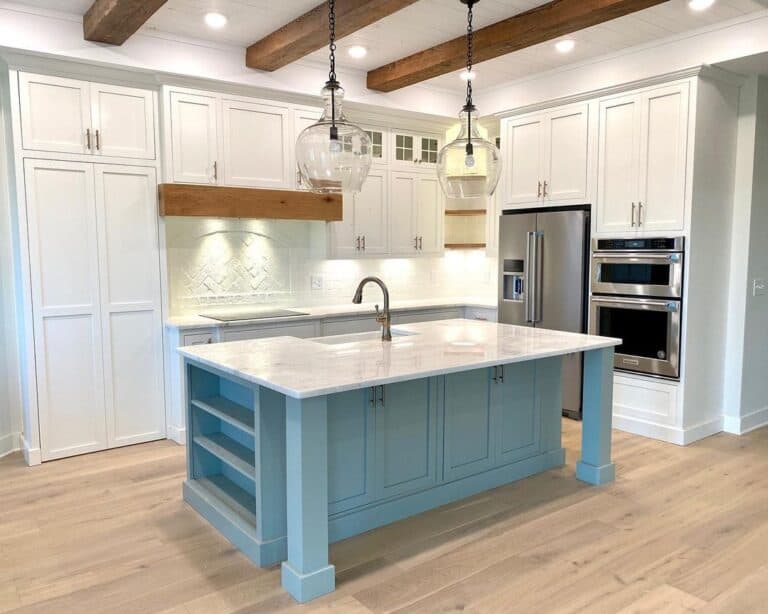Tailor Your Kitchen Look with One-of-a-kind Legs For Kitchen Island Choices
Tailor Your Kitchen Look with One-of-a-kind Legs For Kitchen Island Choices
Blog Article
Important Elements to Consider When Selecting Legs For Kitchen Island
Selecting the proper legs for a kitchen island includes a careful evaluation of multiple aspects that can significantly influence both capability and aesthetic charm. As we explore these aspects, it comes to be clear that each decision can have significant implications for the general cooking area experience.
Material Options
When choosing legs for a cooking area island, understanding the different product options is necessary for achieving both aesthetic charm and architectural integrity (Legs For Kitchen Island). The choice of material dramatically influences not only the sturdiness of the island yet also its overall style and capability
Timber is a popular option, using heat and versatility. Solid hardwoods, such as oak or maple, supply toughness and can be tarnished or repainted to match the kitchen design. Metal legs, commonly made from stainless-steel or functioned iron, add a commercial and modern feeling while making sure toughness and stability. These products are resistant to use and can support substantial weight, making them ideal for larger islands.
Another alternative is crafted products, like MDF or plywood, which can be more economical while still supplying a series of coatings. Nevertheless, they may not offer the exact same degree of stability as solid wood or steel. Lastly, products such as acrylic or glass can produce a contemporary appearance, though they might require added assistance to guarantee stability.
Ultimately, the option of material for cooking area island legs must align with the wanted performance and the overall motif of the kitchen area.
Design and Style

When considering design, the form and finish of the legs are critical. Conical legs can supply a sense of lightness and elegance, while thicker, much more robust legs can communicate stamina and stability. Additionally, the finish-- be it painted, stained, or all-natural-- must match the cabinets and counter top materials to create a unified look.
Moreover, the layout of the legs can additionally mirror individual taste. Customized or decorative legs, such as those including detailed makings or distinct geometric shapes, can act as prime focus, including character and personality to the kitchen. Inevitably, the ideal option will not just improve functionality but additionally raise the aesthetic allure, making the kitchen area island a standout function of the home.
Elevation Factors To Consider
Picking the appropriate elevation for kitchen island legs is important, as it straight affects both capability and comfort. The common elevation for a kitchen area island commonly ranges from 36 to 42 inches, lining up with usual countertop elevations.

It is likewise necessary to account for users' this post choices and heights. Customizing the elevation can make sure a comfortable experience for all relative, making the kitchen island an extra satisfying and functional space.
Weight Assistance
Guaranteeing ample weight support for cooking area island legs is crucial for both safety and performance. The kitchen island usually serves numerous purposes, consisting of cooking, eating, and additional storage, demanding a robust assistance structure. When choosing legs, it is crucial to think about the total weight capability called for based on the island's meant usage and the materials that will be positioned on it.
The choice of material for the legs plays a substantial role in their weight-bearing abilities. Strong wood, metal, and durable compounds generally supply premium strength compared to lighter products. In addition, the design of the legs-- whether they are directly, tapered, or have a pedestal type-- can affect their ability to distribute weight successfully throughout the framework.
Constantly seek advice from the maker's specs pertaining to lots limitations to make sure that the legs can sustain the intended weight without compromising safety. In recap, picking kitchen area island legs with appropriate weight assistance is necessary for creating a risk-free and practical cooking space.
Installment and Maintenance
Appropriate installation read the full info here and upkeep of kitchen island legs are essential for making sure longevity and security. This frequently entails more info here securing the legs to the island base making use of suitable bolts, ensuring that the legs are degree and aligned.
When mounted, routine upkeep is necessary to protect the honesty and appearance of the legs - Legs For Kitchen Island. For wood legs, routine cleaning with a wet towel and application of appropriate timber gloss can avoid dampness damage and maintain their surface. Steel legs may need a mild cleansing service to eliminate oil and grime, complied with by a completely dry towel to avoid corrosion development
Additionally, examine the legs consistently for indicators of wear or damages, such as cracks or loose joints. Tightening screws or bolts as needed can also prolong the life expectancy of the legs. By adhering to these setup and upkeep methods, home owners can ensure that their kitchen area island continues to be tough and visually appealing for years to find.
Final Thought

Aesthetic comprehensibility is extremely important in choosing the design and layout of legs for a kitchen area island, as these components greatly influence the total atmosphere of the room. Conical legs can supply a sense of lightness and elegance, while thicker, a lot more robust legs can convey toughness and stability.Choosing the suitable height for kitchen area island legs is vital, as it straight influences both capability and convenience. In recap, picking cooking area island legs with ample weight support is essential for creating a safe and functional cooking room.
In verdict, picking legs for a kitchen area island requires cautious consideration of different elements, including material alternatives, design, elevation, weight support, and installation.
Report this page